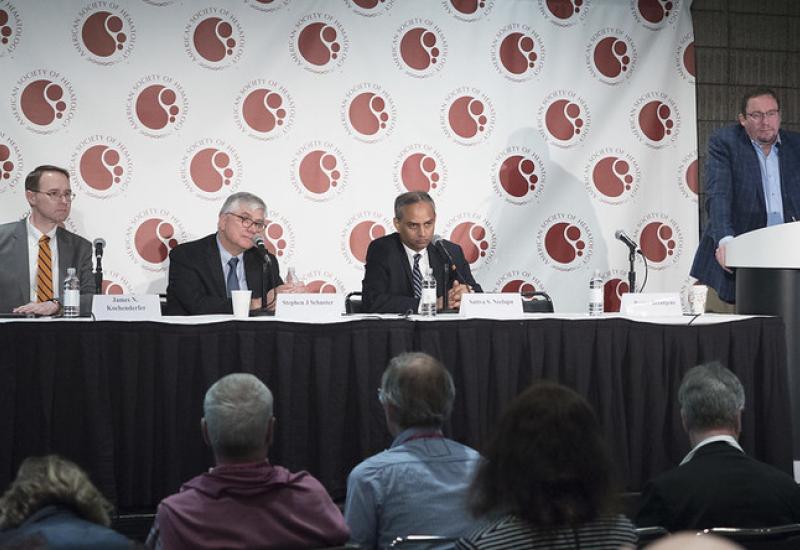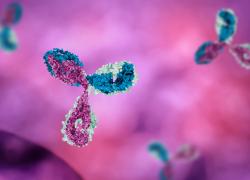
ASCO 2025 preview – Kura looks similar to Syndax
Meanwhile, Pfizer reckons it's found the right dose for its KAT6.
Meanwhile, Pfizer reckons it's found the right dose for its KAT6.

Kura has long touted its menin inhibitor ziftomenib as differentiated from Syndax’s Revuforj, but data disclosed in an ASCO abstract last week suggest that it’s more similar than different. Kura thus took the dubious honour of being one of the early ASCO losers, with its stock sinking 10% on Friday.
Meanwhile, among other notable small-molecule abstracts at ASCO, Pfizer still has much to prove with its KAT6 inhibitor, an increasingly important project in its breast cancer franchise.
Separately, ApexOnco has analysed notable ASCO abstracts covering ADCs, and biologicals more broadly. Meanwhile, ASCO’s late-breakers remain secret until their day of presentation, but were covered by ApexOnco when their titles were unveiled.
Menin me-too?
Kura’s share price fell in February when it toplined data from the registrational Komet-001 trial, in relapsed/refractory AML patients with NPM1 mutations. At the time the company declined to give many details, clearly with an eye on an ASCO presentation.
However, investors clearly didn’t think the data were worth the wait. The primary endpoint of Komet-001 was complete remission plus CR with partial hematologic recovery (CRh), and ziftomenib produced a 23% rate in the phase 2 portion – in line with the 23% seen in Revuforj’s Augment-101 trial. And the duration of response with ziftomenib was lower than for Revuforj, at 3.7 versus 4.7 months.
Still, the main differentiator for ziftomenib, which is partnered with Kyowa Kirin, was always meant to be safety. The QTc prolongation rate was lower than with Revuforj; however, some investors might have been disappointed at the emergence of QTc prolongation at all. On differentiation syndrome, the assets look similar.
Cross-trial comparison of ziftomenib vs Revuforj in NPM1m r/r acute leukaemia
| Ziftomenib | Revuforj | |
|---|---|---|
| Company | Kura | Syndax |
| Trial | Ph1/2 Komet-001 | Ph1/2 Augment-101 |
| Cutoff | 20 Dec 2024 | 18 Sep 2024 |
| CR + CRh | 23% (21/92)* | 23% (15/64) |
| Median duration CR/CRh | 3.7 months | 4.7 months |
| ≥Gr3 QTc prolongation | 2% | 21% |
| ≥Gr3 differentiation syndrome | 13% | 13% |
| Source | ASCO 2025 abstract | Nov 2024 PR |
| Regulatory status | NDA submitted Mar 2025 | NDA submitted Apr 2025 |
Note: *phase 2 pts only. Source: ASCO & OncologyPipeline.
Revuforj is already approved for KMT2Ar relapsed leukaemia, but in NPM1m disease the assets are neck and neck, with both recently being filed. But competition is coming, with Johnson & Johnson’s bleximenib and Sumitomo’s enzomenib looking potentially more efficacious. Meanwhile, Servier just licensed BioNova’s BN104, which at last year’s ASH produced an impressive CR/CRh rate of 40% – albeit in just five NPM1m subjects.
Pfizer’s KAT6
Pfizer has been shifting its second-line breast cancer focus towards its KAT6 inhibitor PF-07248144; previous updates concerned a 5mg daily dose of PF-07248144, with or without Faslodex, but this year’s ASCO will also feature 1mg daily. Pfizer disclosed in February 2024 that it was testing lower doses in an attempt to reduce rates of dysgeusia, or altered taste, a common adverse event with the project.
The company has now concluded that 5mg is indeed the go-forward dose; the ASCO abstract details a 37% ORR with a Faslodex combo, versus 24% with 1mg plus Faslodex, with no reduction in dysgeusia. Still, high-grade neutropenia was more common with the higher dose, and the side-effect profile of PF-07248144 has been questioned previously.
A phase 3 trial of PF-07248144 is due to start in the second half. Pfizer is in the lead here, with Menarini’s MEN2312 and Olema’s OP-3136 only recently entering the clinic.
ASCO takes place in Chicago on 30 May to 4 June.
2144













